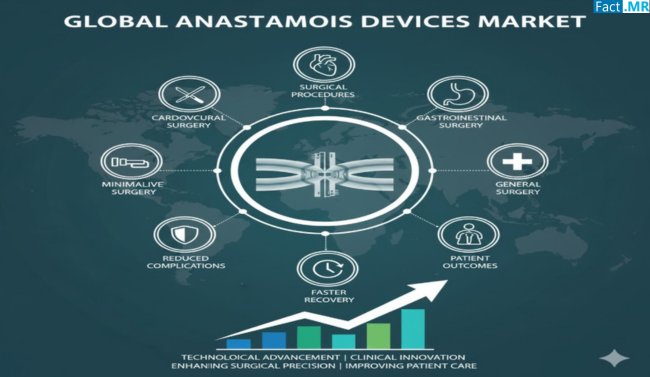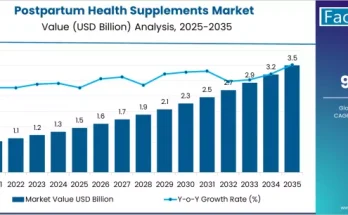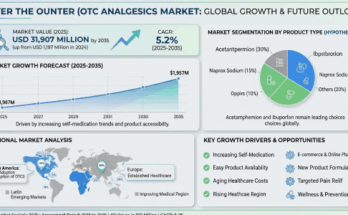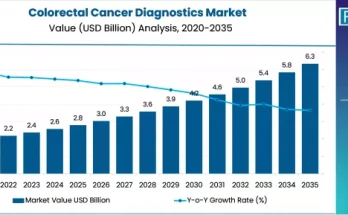The global anastomosis devices market is witnessing strong growth, driven by the increasing prevalence of cardiovascular diseases, gastrointestinal disorders, and advancements in minimally invasive surgeries. Anastomosis devices play a pivotal role in connecting blood vessels, tissues, or organs during surgical procedures, ensuring seamless fluid flow and quicker patient recovery. As the global healthcare system moves toward automation and precision-based surgery, the demand for these devices is poised to rise significantly.
Market Overview
Anastomosis devices are critical tools used in various surgical specialties such as cardiovascular, gastrointestinal, and orthopedic surgeries. Their primary objective is to create a secure and leak-proof connection between tissues or vessels. The growing adoption of these devices stems from the rising need to reduce surgical complications, minimize operation time, and improve patient safety.
Technological advancements—such as automated suturing, magnetic compression, and bioresorbable materials—are transforming traditional surgical practices. Moreover, the increasing preference for minimally invasive procedures is boosting the adoption of endoscopic and laparoscopic anastomosis devices. Surgeons are increasingly opting for devices that provide better control, precision, and reduced human error.
Regional Insights
North America remains a frontrunner in the anastomosis devices market due to its advanced healthcare infrastructure, high surgical volumes, and strong presence of leading medical device manufacturers. The region’s focus on developing innovative, patient-centric surgical technologies is fostering greater adoption across hospitals and clinics.
Europe follows closely, supported by favorable healthcare policies, growing geriatric populations, and increasing investments in surgical research. Countries such as Germany, the U.K., and France are at the forefront of integrating AI-assisted and robotic systems into operating rooms.
Asia-Pacific is emerging as a promising region, driven by rapid healthcare modernization, rising disposable incomes, and government initiatives aimed at improving surgical outcomes. The expansion of medical tourism in India, Thailand, and Singapore is also creating new opportunities for manufacturers to strengthen their presence in the region.
Key Trends and Developments
The anastomosis devices market is evolving rapidly with notable innovations and collaborations aimed at enhancing surgical efficiency. Key trends shaping the market include:
- Technological Integration: The incorporation of robotics and AI in surgery is revolutionizing anastomosis procedures. Automated and image-guided devices are enabling surgeons to perform complex operations with enhanced precision.
- Minimally Invasive Solutions: The ongoing shift toward laparoscopic and endoscopic surgeries is accelerating demand for compact, flexible, and easy-to-use anastomosis devices that minimize trauma and recovery time.
- Biocompatible and Bioresorbable Materials: Manufacturers are focusing on developing devices made from bioresorbable materials to reduce postoperative complications and eliminate the need for device removal surgeries.
- Strategic Collaborations and R&D Investments: Leading players are entering partnerships with research institutions and hospitals to accelerate product innovation and regulatory approvals. Continuous investment in R&D is fostering next-generation designs and materials.
- Focus on Patient Safety and Efficiency: Increasing regulatory scrutiny on surgical outcomes is encouraging hospitals to adopt advanced anastomosis devices that ensure consistent and reliable results.
Applications and End-Use Outlook
Anastomosis devices are extensively utilized across several medical fields:
- Cardiovascular Surgery: Used in coronary artery bypass grafting and other vascular reconstructions, these devices help maintain optimal blood flow while reducing operative time.
- Gastrointestinal Surgery: In colorectal and bariatric procedures, anastomosis devices provide leak-proof connections and faster healing, which are critical for patient safety.
- Orthopedic and Urological Surgeries: With expanding applications, these devices are improving surgical precision in complex tissue reconnections.
- Hospitals and Ambulatory Surgical Centers: As healthcare facilities emphasize shorter hospital stays and faster recovery, the adoption of efficient and disposable anastomosis devices continues to rise.
Competitive Landscape
The market is moderately consolidated, with several leading medical device companies competing through innovation, quality, and regulatory compliance. Key players are focusing on developing automated systems and integrating digital health technologies to support real-time surgical guidance. Partnerships, mergers, and acquisitions are also reshaping the competitive landscape, allowing companies to broaden their product portfolios and strengthen global distribution networks.
Emerging startups are contributing to innovation through AI-based diagnostic and surgical platforms, further fueling technological progress in the field. Sustainability and cost-effectiveness are also becoming essential differentiators as hospitals seek long-term, efficient solutions.
Conclusion
The anastomosis devices market is entering a transformative phase, characterized by digital integration, material innovation, and growing global demand for minimally invasive surgeries. As healthcare providers continue to prioritize patient safety, efficiency, and recovery outcomes, the adoption of advanced anastomosis devices will remain central to surgical innovation.
Continuous research, robust governance frameworks, and collaborative partnerships between manufacturers and healthcare institutions will shape the next generation of surgical tools—ensuring that precision, safety, and reliability remain at the core of modern medicine.



